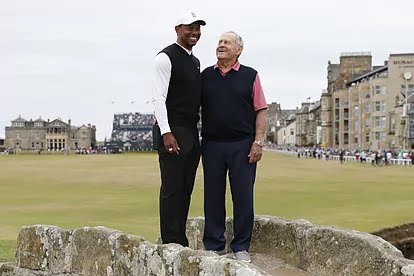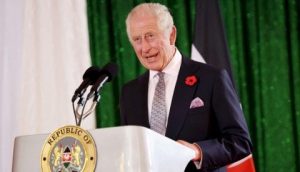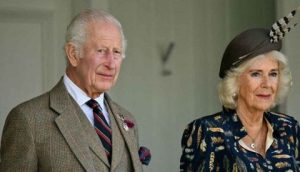
Golfing icon actually faced pressure before penning the 40-million-dollar deal
Before Tiger Woods became synonymous with professional golf dominance, his reputation was already firmly established within the amateur ranks.
The 1996 U.S. Amateur Championship was not just a tournament, it was a turning point that revealed the defining characteristics of a player who would soon alter the landscape of the sport.
The final, a 38-hole contest against Steve Scott, stands out not only for its competitiveness but also for what it revealed about Woods’s mental strength.
At the time, Woods was a 20-year-old with five USGA titles, including three U.S. Junior Amateurs and two U.S. Amateurs.
The 1996 championship offered him the chance to secure a third consecutive U.S. Amateur title, an achievement no other golfer had accomplished.
His opponent, Steve Scott, pushed him to the edge, but ultimately, Woods emerged victorious. In a recent appearance on the 5 Clubs Podcast, Scott provided valuable insight into that intense match and identified the trait that, in his view, made the critical difference.
Compartmentalization under pressure
According to Scott, while Woods’s physical capabilities were exceptional, particularly his length off the tee, which gave him a 50-yard advantage on some drives, it was his mental approach that truly distinguished him.
“What stood out,” Scott recalled, “was his ability to compartmentalize.” This cognitive skill allowed Woods to isolate each shot, blocking out distractions, past mistakes, and external pressure.
The 1996 final was played in front of approximately 15,000 spectators, an unusually large crowd for an amateur golf event.
That atmosphere intensified the psychological demands of the day. Despite trailing by five holes after the first 18, Woods maintained composure, a feat Scott attributed to his focused mental state.
The contrast between the two finalists was stark. Between rounds, Woods practiced with coach Butch Harmon, preparing with intensity and focus.
Scott, by comparison, stepped away from the game momentarily, spending time with his girlfriend, now his wife, in an attempt to clear his mind. This divergence in preparation highlighted the differing ways the two players responded to pressure.
There was more at stake for Woods than the championship title. A $40 million endorsement agreement with Nike, negotiated by Phil Knight, was pending.
Had he lost, that deal, and its implications for his transition to the professional circuit, might have been jeopardized.
Yet Woods did not allow that weight to affect his performance. In the second 18 holes, he responded by shooting an estimated 65, erasing the deficit and forcing the match into a playoff. After 38 holes, Woods secured the victory, completing his historic “triple trifecta.”
Within a year, Woods would win The Masters and begin a new era in professional golf. The 1996 Amateur final, however, remains a critical part of his story, a moment where the psychological foundations of his success were tested and proven.
Even those around Woods, such as longtime caddie Steve Williams, recognized the unique demands that came with being part of his team.
Williams, who had worked with elite players like Greg Norman, did not accept Woods’s offer immediately. He understood the magnitude of the role, not just in terms of golf, but in managing constant scrutiny and expectation. After careful consideration, he accepted, joining Woods on a path that would redefine the sport.
The 1996 U.S. Amateur was more than a tournament; it was a showcase of strategic focus, emotional control, and mental clarity. Tiger Woods’s performance that day signaled that his success would not be measured only in talent, but in his unmatched ability to perform when it mattered most.







